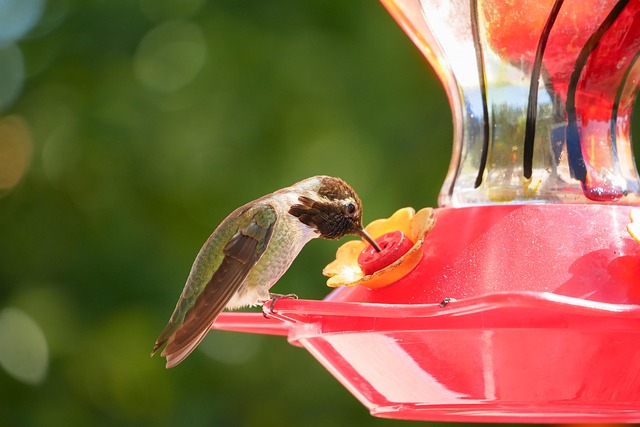Spring marks a fresh start for your backyard, so assess plants and landscapes for winter damage, clear debris, aerate lawns, prune shrubs, and maintain irrigation. Regular seasonal upkeep ensures year-round health and beauty, from spring prep to fall cleanup. This includes evaluating grass, fixing bare spots, aerating, mowing, and watering consistently for vibrant growth. Implement these backyard upkeep tips for optimal garden care throughout all seasons, promoting all-season landscaping.
Get ready to transform your backyard into a vibrant oasis with our comprehensive guide to preparing for spring growth. From assessing winter damage and laying the groundwork for new life to year-round care essentials and seasonal outdoor maintenance timelines, we’ve got you covered. Learn how to choose plants suited to your climate, maintain a lush lawn, and create all-season visual interest. Discover essential backyard upkeep tips to ensure garden care through every season, ensuring your space stays vibrant and beautiful year after year.
Assessing Winter Damage and Preparing for Spring
Assessing any winter damage is a crucial step in preparing your backyard for the spring. During the colder months, plants and lawns often sustain injuries from extreme temperatures, frost, or snow. Start by inspecting your garden beds, shrubs, and trees for any signs of damage, such as wilted or dead foliage, broken branches, or discolored leaves. This evaluation will help you identify areas that require repair and recovery before new growth begins.
Winterizing your backyard is an ongoing process that involves several key steps to ensure year-round care. Prepare for spring by clearing away any remaining debris from the fall, such as dead leaves and grass clippings. Aerate and fertilize your lawn according to a scheduled lawn care schedule to promote healthy root growth. For plants and shrubs, consider pruning to shape them and encourage new blooms. Additionally, assess your irrigation system and make repairs or adjustments to ensure efficient watering once the warmer weather arrives. These proactive measures will set the stage for a vibrant and thriving backyard throughout the season, providing you with beautiful outdoor spaces to enjoy.
– Inspecting plants, trees, and shrubs for winter damage
As winter transitions into spring, it’s crucial to inspect your plants, trees, and shrubs for any damage incurred during the colder months. This step is vital for ensuring a healthy and vibrant year-round backyard. Start by walking around your garden, looking for signs of mortality or weakened areas. Check for broken branches, wilted foliage, or discolored leaves, which could indicate issues like frostbite or pest infestations.
Regularly assessing your landscape as part of your seasonal outdoor maintenance routine is an essential aspect of all-season landscaping. By addressing any winter damage early on, you’ll promote better growth and encourage beautiful blooms in the upcoming summer. This spring garden prep will set the stage for a lush and thriving backyard throughout the year, ensuring your lawn care schedule stays on track despite the changing seasons.
– Pruning dead wood and branches
Maintaining a year-round backyard care routine is essential for optimal garden health and a stunning seasonal outdoor display. One crucial aspect of this upkeep involves regular pruning, especially as we transition from winter to spring. Deadwood and branches that have withered or become damaged over the cold months should be carefully removed to encourage new growth. This process not only enhances the overall aesthetics of your backyard but also promotes a robust and vibrant garden come summer.
When preparing for spring, focus on identifying and cutting back any dead or diseased branches. Pruning is an art, so ensure you have the right tools for the job. Properly pruned trees and shrubs will be better equipped to handle the upcoming growing season, allowing for healthier blooms and growth throughout your backyard landscape—a true testament to effective year-round landscaping practices.
– Evaluating lawn health and preparing for seeding
Evaluating your lawn’s health is a key step in preparing for the spring growth and blooms. Before seeding, assess the current state of your grass: look for bare spots, uneven growth, or signs of wear and tear from winter weather. This will help you identify areas that need extra attention and determine if reseeding or over-seeding is necessary. A thorough inspection also allows you to address any underlying issues like poor drainage or soil compaction, ensuring a robust foundation for new grass growth.
Winterizing your backyard is crucial for year-round backyard care. In the fall, before the first frost, clean up debris and dead plant matter to prevent overwintering pests and diseases. Consider aerating your lawn to improve air circulation and water penetration, which will enhance root development come spring. Following a regular lawn care schedule throughout the season, including consistent mowing and watering (especially during dry spells), ensures optimal conditions for seeding in early spring. These seasonal outdoor maintenance practices are essential for achieving lush, vibrant blooms and maintaining all-season landscaping.
Preparing your backyard for spring growth and blooms involves a year-round commitment to care. By assessing winter damage, pruning dead wood, evaluating lawn health, and planning for seeding, you set the stage for a vibrant garden that thrives through every season. Incorporating regular backyard upkeep tips ensures your space remains an all-season landscape, providing beauty and enjoyment throughout the year. Remember, proper seasonal outdoor maintenance, from fall cleanup to summer care, is key to maintaining a healthy and inviting outdoor oasis.
